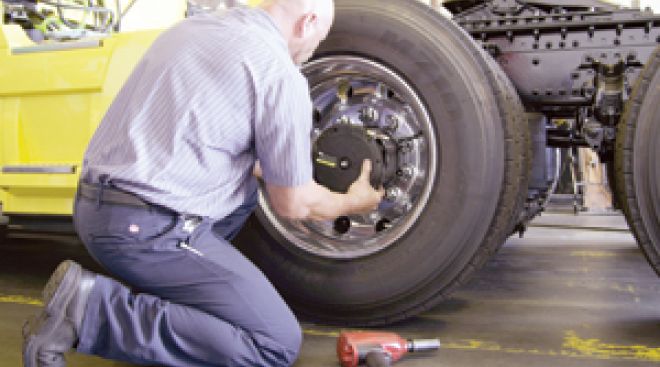Cab Cameras Gain ‘Machine Vision’
The video safety systems in truck cabs are becoming smarter. Rather than simply recording video of events on the road, some of the latest systems have gained the ability to “see” the truck’s environment and draw conclusions about driver behavior.
Fleets Fight Fuel Gelling From Winter’s Chill With Tricks of the Truck Maintenance Trade
As the cold temperatures of winter set in, fleets and fuel providers are using a variety of methods to prevent fuel gelling, which can lead to truck breakdowns and maintenance headaches.
Targeting Tire Pressure
Many fleets are using technology that monitors tire pressure or automatically adds air as a way to improve fuel efficiency, extend tire life and prevent expensive roadside service calls, but these systems also could play an important role in the industry’s efforts to curb emissions in the years ahead.
Mobile Apps, Reserved Spaces Help Drivers Locate Available Parking
Industry organizations, major truck stop chains, government officials and a Silicon Valley startup are all attempting to help truck drivers with one of their most pressing challenges today — finding a place to park.
Cab Seat Technology Addresses Driver Health Concerns
Driving a truck for hours on end day after day takes its toll on the body, but the engineers of today’s cab seats are doing more than ever to address driver health and comfort concerns. These seats offer an array of features that soothe body aches and pains, reduce vibration and accommodate the range of body sizes.
Combating Driver Distraction, Fatigue
Advances in technology are giving trucking companies increasingly sophisticated ways to combat distracted and drowsy driving — two of the biggest threats to fleet safety.
Suppliers Offer Systems That Monitor Drivers’ Faces for Alertness
Several technology suppliers are offering onboard systems that monitor the driver’s face for signs of distraction or drowsiness.
Allison Cites Fuel Savings Using TC10 Transmission
INDIANAPOLIS — Allison Transmission, which makes the only fully automatic transmission for heavy-duty trucks in the United States, said that fleets using its TC10 automatic gearbox report a 5% improvement in fuel economy over manual transmissions or automated manuals.
The Advantages of Computer-Based Training
Driving simulators, behind-the-wheel training and classroom instruction have their place, but one limitation is that they all depend on the driver’s ability to be present for the training. Internet-based training can be accessed anywhere at any time.
Getting the Most From Simulator Training
The ultimate goal of all training is sustained improvement in driver performance. “I advise people that training is only the first step,” said Yves Provencher, director of Performance Innovation Transport, in Pointe-Claire, Quebec.







